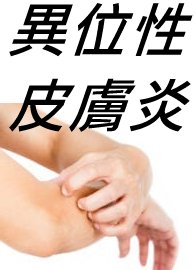| title | Phellodendron Bark, Guan Phellodendron Bark |
| release time | 2006/3/7 |
| source | Jade Knock Studio |
| keyword | Phelloendron Bark, Phellodendron Bark |
The current use of Phelloendron Bark refers to the dried bark of Phellodendron chinense Schneid., a plant of the beautiful steetgum resin family, commonly known as "Chuan Phelloendron Bark"; Guan Phelloendron Bark refers to the dried bark of Phellodendron amurense Rupr., also a plant of the beautiful steetgum resin family. Phelloendron Bark is mainly produced in Dujiangyan, Maoxian, Emeishan, Nanchong, Bijie, Zunyi, Anshun, Xingyi in Guizhou, Fengxian, Yangxian, Luonan, Ankang, Ziyang in Shaanxi, Zhuxi, Chongyang in Hubei, Zhaotong, Tengchong in Yunnan, and other regions, with Sichuan and Guizhou having larger yields. Guan Phelloendron Bark is mainly produced in Gaiping, Xiuyan, Haicheng in Liaoning, Dunhua, Tonghua, Huadian in Jilin, Zhangbei, Yuxian, Chengde in Hebei, and also in Heilongjiang and Inner Mongolia, with Liaoning having a larger yield.
Materia medica research suggests that the term "檗木" (bark wood) before the Tang Dynasty included plants of the Phellodendron genus in the beautiful steetgum resin family and the Berberis genus in the Berberidaceae family. The Xinxiu Bencao began to list the Berberis genus separately, and the term "檗木" or "黄檗" specifically referred to Phellodendron sp. From the Five Dynasties Shu Bencao onwards, the medicinal Phelloendron Bark was considered superior when produced in Sichuan, with Phellodendron chinense being the authentic variety. The recognition of Phellodendron amurense, mainly produced outside the Guan region, as the genuine Phelloendron Bark is related to the special political environment of the Qing Dynasty.
bubble_chart Variety Identification
Phelloendron Bark, compiled by Sun Xingyan in Bencao Jing as "檗木", is written as "蘗木" in the version by Sen Liben, and other versions have "櫱木" or "櫱木". According to "Shuowen", "檗" is the correct character, with Xu Shen stating: "檗, yellow wood", and Xu Kai's commentary: "Yellow wood, is what is now used by pharmacists as Huangbo." Although "Shuowen" does not include the character "蘗", it was indeed used in the Eastern Han Dynasty to refer to the medicinal bark wood, as noted by Zheng Xuan in "Kaogongji": "薜, read as the medicinal phellodendron bark's 蘗." Duan Yucai's explanation is quite reasonable: "Yellow wood, is the 檗木 in Bencao Jing, also known as Tanhuan, commonly written with the grass radical as 蘗." As for "櫱" and "櫱", the correct pronunciation is niè, originally meaning the regenerating buds of trees, with "類篇" also pronouncing "櫱" as bò, interpreted as yellow wood, which are actually erroneous writings of "蘗".
Writing as "檗" or "蘗" may seem like a distinction between standard and vulgar characters, but in the Han Dynasty, it might have directly involved the name and reality of this product. Bark wood has been used as a dye since ancient times, as noted by Sima Xiangru in "Zixu Fu": "檗離朱楊", with Zhang Ji commenting: "檗, the bark can be used for dyeing." Zeng Zao in "Leishuo" volume 47 Orpiment entry states: "Ancient people used yellow paper for writing, dyed with 檗, to repel insects, hence called yellow scrolls." Bao Zhao's poem "剉蘗染黃絲, 黃絲歷亂不可治." The beautiful steetgum resin family's Phellodendron chinense and others contain berberine that can dye yellow, so considering these plants as the source of Han Dynasty's bark wood should not be a problem. However, from another perspective, Phellodendron chinense is a tall tree, reaching 15-20 meters, making it hard to imagine the character "檗木" for a tree, already with the radical "木", being added with the "艸" radical to become "蘗木", which is indeed unlikely. On the other hand, Berberis plants in the Berberidaceae family are generally small shrubs of 1-3 meters, also containing yellow berberine, so it cannot be ruled out that various Berberis sp. were also considered as bark wood in the Han Dynasty.This confusion still existed during Tao Hong-jing's era. The "Collected Annotations" states: "Its root is classified among the Taoist 'wooden fungi' category, but people today do not know to take and consume it. There is also a small tree, resembling a pomegranate, with yellow and bitter bark, commonly called 'Zi Bo,' which also treats aphtha. Another small tree, very thorny, also with yellow bark, also treats aphtha." Tao Hong-jing mentions the type of Phellodendron referred to as "Taoist wooden fungi" in the "Inner Chapters of Baopuzi: Immortal Medicines": "The root beneath a thousand-year-old Phellodendron bark tree, resembling a three-hu vessel, located one or two zhang from the main trunk, connected by fine roots like threads, is ground into powder and consumed. Consuming one piece completely can make one an earthbound immortal, never dying." This type of Phellodendron should belong to the Phellodendron genus of the Rutaceae family, while the low-growing, pomegranate-like, thorny Phellodendron described by Tao is likely from the Berberis genus of the Berberidaceae family.

Afterwards, in books such as "Pin Hui Jing Yao", "Bencao Mengquan", "Bencao Gangmu", "Ye Cai Bo Lu", "Zhiwu Mingshi Tukao", etc., Amur cork-tree, or Huang Bo, or abbreviated as Phellodendron Bark, are almost all Phellodendron chinense type.
As for Phellodendron amurense, mainly distributed outside the pass, becoming the official medicinal product is probably related to the Manchus entering the Central Plains during the Qing Dynasty. According to "Shengjing Tongzhi" volume 10, Emperor Qianlong's "Shengjing Fu" has a line: "Bright red apricots and crimson peaches, mixed white Catalpa and yellow Phellodendron", which is probably the earliest literature reference to Phellodendron Bark outside the pass.
bubble_chart Authentic Evolution
In "Bencao Jing Bielu", Amur cork-tree "grows in Hanzhong valleys and Yongchang", Tao Hong-jing said: "Now those from Shaoling are light, thin and dark in color, which are the best, those from Dongshan are thick and light in color." At that time, Sichuan products were not yet considered the best.
During the Tang Dynasty, the main production area of Phelloendron Bark was between Sichuan and Shaanxi. The "Yuanhe Junxian Zhi" Volume 25 mentions that in Wuxing Mountain, Shunzheng County, Xingzhou, "there is much lacquer and Phelloendron Bark." The "New Book of Tang: Geography" records that Phelloendron Bark was a local tribute in Jinzhou's Hanyin Commandery, which is located in the area of present-day Hanzhong and Hanyin County in Shaanxi. The "Shu Bencao" from the Five Dynasties period clearly states that "those from Sichuan are the best." Since then, various materia medica and local chronicles have often regarded Sichuan-produced Phelloendron Bark as the highest quality, with numerous documents attesting to this, which will not be extensively cited here. The "Zengding Weiyao Tiaobian" discusses the quality differences between Sichuan Phelloendron Bark and Guan Phelloendron Bark: "The Phelloendron Bark produced in Nanchong County, Shunqing Prefecture, Sichuan, is known as Sichuan Phelloendron Bark, with an old yellow color, yellow-black inner and outer bark, and small pieces that can be used as dye. The Phelloendron Bark produced in Hunan and Guandong is known as Guan Phelloendron Bark, with very large and thin pieces and a light yellow color, which is of lesser quality."
bubble_chart Other Related Items







